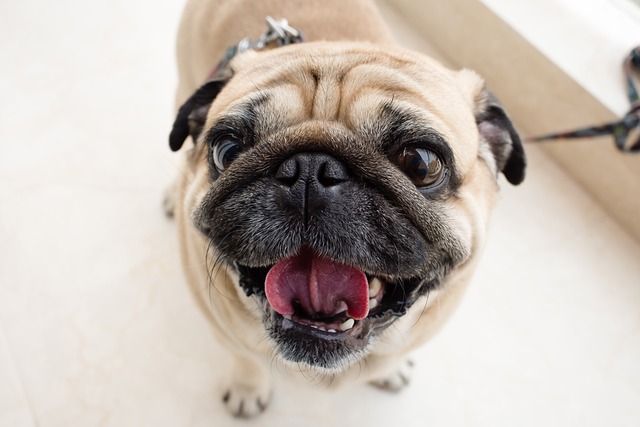
How to test for tetanus in dogs?
Tetanus in dogs often starts with subtle signs most owners miss—like a stiff jaw when grabbing a favorite chew toy or hesitation to climb stairs they once bounded up.
Degenerative joint disease, often called osteoarthritis, affects millions of dogs, but its impact on lifespan varies widely. This progressive condition wears down the cartilage in joints, causing pain and stiffness, yet with proper care, many dogs thrive for years after diagnosis. The key lies in understanding how to manage symptoms and support their overall health.
Breed and size play significant roles. Large breeds like Labradors and German Shepherds are more prone to joint issues, often developing signs earlier in life—sometimes as young as 5 or 6. Their larger frames put extra stress on hips, knees, and elbows. Smaller breeds, while not immune, tend to show symptoms later, and their smaller joints may deteriorate more slowly. A study of 2,000 dogs with osteoarthritis found that small breeds lived an average of 2–3 years longer with the condition than their larger counterparts.
Weight is a critical factor many owners overlook. Extra pounds add strain to already painful joints, accelerating damage. Vets recommend keeping dogs with joint disease at a lean body condition—you should be able to feel their ribs without pressing hard. A 10% weight loss in overweight dogs with arthritis has been shown to reduce pain and improve mobility significantly. Many pet food brands offer low-calorie formulas designed for joint health, but consult your vet before changing diets.
Early intervention makes a big difference. Catching signs like reluctance to climb stairs, slower walks, or stiffness after resting allows for treatments that slow progression. Non-steroidal anti-inflammatory drugs (NSAIDs) prescribed by vets can manage pain, but they require regular bloodwork to monitor for side effects. Supplements like glucosamine and chondroitin may support cartilage health, though results vary—look for products with veterinary approval.
 Exercise tailored to their abilities prevents further damage. Gentle activities like short, slow walks or swimming keep joints mobile without overexertion. Avoid high-impact exercises like jumping or running on hard surfaces, which jar painful joints. In cold weather, stiffness often worsens, so shorter, more frequent outings work better. Many owners find that keeping a consistent daily routine helps their dog stay active without discomfort.
Exercise tailored to their abilities prevents further damage. Gentle activities like short, slow walks or swimming keep joints mobile without overexertion. Avoid high-impact exercises like jumping or running on hard surfaces, which jar painful joints. In cold weather, stiffness often worsens, so shorter, more frequent outings work better. Many owners find that keeping a consistent daily routine helps their dog stay active without discomfort.
Environmental adjustments ease daily life. Raised food and water bowls reduce the need to bend, which strains neck and shoulder joints. Orthopedic beds with memory foam cushions relieve pressure points—place them in warm, draft-free areas since cold air worsens stiffness. Ramps instead of stairs for cars or couches protect hips and knees. These small changes let dogs maintain independence, which boosts their mental well-being.
Physical therapy and alternative treatments offer additional support. Certified canine rehabilitation therapists use techniques like hydrotherapy, massage, and stretching to improve mobility. Acupuncture, while not a cure, helps some dogs manage pain—many pet insurance plans now cover these therapies, so check your policy. Always ensure practitioners are licensed and experienced with dogs to avoid injury.
Pain management must be ongoing and personalized. What works for one dog may not work for another. Some respond well to oral medications, while others benefit from topical creams or joint injections. Vets often combine treatments for best results. It’s important to watch for subtle signs of pain—restlessness, changes in appetite, or decreased grooming—as dogs tend to hide discomfort to avoid appearing vulnerable.
Regular vet check-ups are non-negotiable. Twice-yearly exams allow for adjustments to treatment plans as the condition progresses. X-rays can track joint changes, helping vets modify medications or recommend new therapies. In some cases, surgery—like hip replacement or knee stabilization—may be an option, especially for younger dogs with severe joint damage.
Mental health matters too. Dogs in pain often become less social or playful, which can lead to depression. Keeping their minds active with puzzle toys, gentle training sessions, or supervised play with calm dogs prevents boredom. Maintaining their usual routines as much as possible provides security, which is especially important for senior dogs.
Legal and community considerations come into play. Many areas require dogs to be leashed in public, which protects arthritic dogs from overexertion or accidental bumps from other animals. Service dogs with joint issues may qualify for accommodations under assistance animal laws, but emotional support animals generally don’t—check local regulations if your dog helps with your mental health.
Owner commitment is the biggest predictor of success. Dogs with dedicated owners who stick to treatment plans, monitor weight, and adjust care as needed live longer, happier lives. Take Max, a 10-year-old Golden Retriever diagnosed with hip dysplasia at 7. His owner switched to a joint-friendly diet, started daily swimming sessions, and gave him prescribed pain meds. Three years later, Max still enjoys short walks and cuddles on the couch, showing few signs of slowing down.
Degenerative joint disease changes a dog’s life, but it doesn’t have to cut it short. With a combination of medical care, lifestyle adjustments, and lots of love, these dogs continue to bring joy to their families for years. The focus should be on quality of life—ensuring each day is comfortable, active, and full of the things they love most.

Tetanus in dogs often starts with subtle signs most owners miss—like a stiff jaw when grabbing a favorite chew toy or hesitation to climb stairs they once bounded up.

If you’re a new dog parent in the US—maybe you’re standing in your Ohio apartment’s pet store aisle, holding a bag labeled “senior dog food” while your 8-year-old Dachshund

If you’re a new dog parent to a senior pup in the US—maybe you’re standing in your Florida apartment’s pet food aisle

Pet owners often worry about hidden health risks for their dogs, and toxoplasmosis is one that flies under the radar for many—understanding how dogs pick it up is key to keeping them safe.

If you’re a new dog parent in the US—maybe you’re standing in your Chicago apartment, staring at your 7-month-old Poodle mix, Bella

Tetanus in dogs comes from bacteria entering open wounds—think a deep cut from a rusty fence nail during a walk, or a scraped paw from digging in contaminated soil.